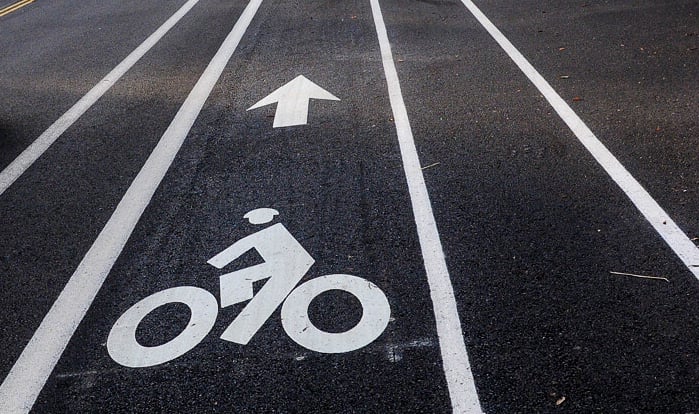I used to write the back page column for a bike magazine called “Roadie International.” I did about 3 or 4 of them before the magazine folded last year and the last one I wrote never got published. It’s about my preparation for the Jack Frost Time Trial, which happens this Sunday at Vancouver Lake Park, just a few minutes north of Portland.
So, here it is. Hope you like it:
“Aero at any cost”
While tinkering in my basement the night before the Jack Frost Time Trial I had an epiphany. It would be my first race in about 5 years so it’s amazing any clear thoughts emerged from the swirling nervousness in my head. But as often happens with anyone who has done a time trial, the dominant pre-event anxiety deals with a single yet complex concept: getting aero.
Aerodynamics – defined as “the interaction between airflow and the movement of solid bodies” – is the engine that drives much of the road cycling market. It’s what perpetuates the cyclist’s obscene fascination for anything that offers even the slightest airflow increasing advantage, including carbon, deep-dish, aero-wheelsets and dimpled, teardrop helmets that flaunt more technology than the Space Shuttle. Like the “digital divide” that spans between broadband wi-fi junkies and disadvantaged dial-uppers, the “gear divide” in cycling is just as pervasive. For those of us on the wrong side we can either sulk in our state of forced retro-ness or we can choose to innovate…which brings me back to my epiphany.
There was no way I would show up at the start line with a helmet full of gaping, air-sucking holes. I decided they must be covered. So, like any sensible guy the first thing that popped into my head was duct tape. But, along with getting aero, another unsaid rule of the enlightened roadie code is to look as cool as possible. So, instead of just slapping on big strips of duct tape, I began to painstakingly cut pieces to custom fit the shape and size of each individual vent. The finished product was O.K., but I knew I could do better. I took a few deep breaths and began to take a mental and visual inventory of my entire basement. Seeing some cardboard, I considered using it to fabricate my own, low-budget tear drop helmet…but that would have broken the very important be-as-aero-as-possible-without-being-a-dork rule. Then I saw it. Hanging on a nail in a forgotten corner of my basement hung a swimming cap. This particular cap had sentimental value as it came in the registration packet of my first and only triathlon. I had a short (one race) but very sweet triathlon career and if it wasn’t for having the knees of a 70 year old I’d still be at it today…but, I digress. For this cap, its true destiny was yet to be fulfilled; it would be the integral part of my new aero helmet.After a few eyeballed measurements I knew I was onto something. I pulled the rubber cap over the front of my helmet and began to work it all the way to the back…stretching and re-stretching it until all the wrinkles had vanished. The result was a perfectly smooth, wind-cheating swimming cap helmet that would surely propel me to victory the next morning when combined with my borrowed aerodynamic handlebars and last minute, strategic saddle adjustments. Now, with aero-ness achieved, it was just a matter of putting “paint to canvas” as a graphic designer friend of mine would say and pedaling fast and hard against the clock for a measly 10 kilometers.
So how did I do? Unbelievably, although appreciated by other racers (they were laughing with me, right?), my swimming cap failed to make much of a difference. I had a forgettable time but it was not for lack of trying, or homemade technology. Perhaps I should spend less time in my basement and more time addressing the “lack of fitness divide” which I find myself on the wrong side of more and more these days.
Good luck to all the time trialers racing this weekend. May you be as aero as you want to be.

